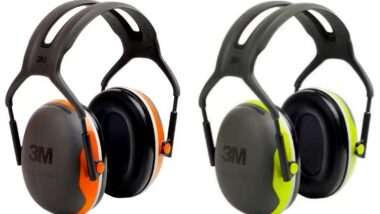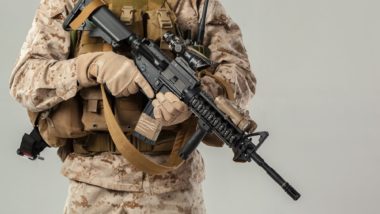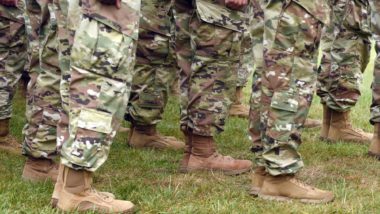Top Class Actions’s website and social media posts use affiliate links. If you make a purchase using such links, we may receive a commission, but it will not result in any additional charges to you. Please review our Affiliate Link Disclosure for more information.
Military hearing loss is a serious issue that affects many different veterans. Over the course of their training and time in service, military members are exposed to many different kinds of sounds, some of which are extremely loud and can cause hearing loss for members of the military.
Especially for those in combat situations with weapons and explosions and those who have been in military service for decades, the risk of military hearing loss is severe, according to CBS News. In general, hearing loss is characterized by the sound of ringing in the ears and is formally diagnosed as tinnitus.
While hearing loss for servicemembers is common, branches of the military have taken steps to try to prevent these kinds of issues by providing access to earplugs. However, the combat arms earplugs given to soldiers, sailors, and Marines from 2003 to 2015, made by 3M, were allegedly defective. This means that even a servicemember who wore these on a regular basis could suffer from tinnitus because these earplugs fit poorly.
Over time, they were less effective for preventing tinnitus and serious hearing loss problems according to the Military Times.
The dual-ended earplugs were allegedly designed to give the wearer the option to switch them out and turn them around based on the circumstances. These were the only dual-sided earplugs that the military purchased and used with servicemembers.
On one end, they allowed low-intensity sounds to come through, but the other side was meant for situations with louder surroundings as that end blocked and muffled more sounds. Servicemembers relied on these earplugs and used them with the expectation that their hearing would be protected, but the products didn’t work and instead left veterans exposed to hearing problems and military hearing loss, per the Military Times.
When the seal on the earplugs wore out, those wearing them might have been subjected to extremely loud sounds that could trigger hearing loss. Loss of balance, tinnitus, and hearing loss are all side effects associated with these defective earplugs. It is believed that thousands of service members were affected by these issues.
According to some of these veterans, 3M knew that the earplugs were defective but continued to supply them to the military and did not inform the government about the problems. Some of these veterans now have to cope with long-term impacts from hearing loss.
The signs of serious hearing loss for veterans can include a high-pitched whistle sound, a buzzing, a hissing, or ringing in the ears. Hearing loss can also present in other ways, such as when the person has difficulty understanding the spoken words of others.
In addition to the physical issues associated with hearing loss, this can also make it emotionally difficult for affected veterans in social situations as they struggle to hear or be able to understand someone else due to the ringing in their ears.
A veteran who scores normally on a hearing test might still have this form of an auditory processing disorder. Veterans are more likely to experience this due to exposure to blasts over the course of their time in service.
The Pentagon reached a settlement with 3M over the issue after discovering that the 3M earplugs may have been defective, the American Homefront Project reports. Hearing loss is common among military service members, as they are often exposed to loud machinery and explosions. However, military service members rely on effective protection to reduce this risk and to preserve hearing. When trusted devices are ineffective, many people can be impacted.
The American Homefront Project does note that because service members do have an elevated risk of hearing loss, it may be difficult to determine how much hearing loss was linked to the possible 3M defect, and how much was due to other injuries linked to military service. Reportedly, around 1.8 million veterans get disability payments for tinnitus, and around one million get disability payments for service-related hearing loss.
Nonetheless, the amount of hearing loss observed in younger service members is striking, the American Homefront Project notes. Hearing loss occurs gradually, but those service members who used the allegedly defective 3M earplugs may have been especially effective.
The U.S. government reportedly takes hearing seriously and even has a Pentagon Hearing Center of Excellence in Texas. Moving forward from the issue of the allegedly defective 3M earplugs, the center is taking steps to inform troops on the importance of hearing protection and help research hearing issues.
Additionally, the center aims to develop a list of effective hearing devices to best equip service members. This may be a complex task, as work in the military may involve a range of loud tasks that necessitate different types of hearing protection.
Filing a 3M defective earplug lawsuit
A large number of current and former military members have taken legal action against the company, with over 230,000 lawsuits pending against 3M for allegedly distributing defective earplugs. 3M lost two of the first three bellwether trials over the earplugs.
The first 3M earplug trial resulted in a $7.1 million verdict in favor of three veterans, but the second trial was ruled in 3M’s favor. In the third bellwether trial, 3M once against lost, having been found 62 percent responsible for the plaintiff’s hearing loss. The plaintiff was awarded $1.7 million in damages.
Then, in January, two former servicemembers suffering from hearing loss were each awarded $55 million in compensatory and punitive damages, making it by far the largest in the bellwether trials so far.
3M has lost 9 out of 15 bellwether trials over the defective earplugs.
A Florida federal judge has ordered an acceleration of 3M earplugs bellwether trials and other cases in the MDL due to an “unprecedented backlog” of cases, per Law360.
If you or someone you know is already suffering from tinnitus or hearing loss because of defective 3M earplugs, now is the time to consider speaking with a lawyer about your options.
Filing a lawsuit can be a daunting prospect, so Top Class Actions has laid the groundwork for you by connecting you with an experienced attorney. Consulting an attorney can help you determine if you have a claim, navigate the complexities of litigation, and maximize your potential compensation.
Do YOU have a legal claim? Fill out the form on this page now for a free, immediate, and confidential case evaluation. The attorneys who work with Top Class Actions will contact you if you qualify to let you know if an individual 3M Ear Plug lawsuit or military hearing loss class action lawsuit is best for you. [In general, 3M Ear Plug lawsuits are filed individually by each plaintiff and are not class actions.] Hurry — statutes of limitations may apply.
ATTORNEY ADVERTISING
Top Class Actions is a Proud Member of the American Bar Association
LEGAL INFORMATION IS NOT LEGAL ADVICE
Top Class Actions Legal Statement
©2008 – 2024 Top Class Actions® LLC
Various Trademarks held by their respective owners
This website is not intended for viewing or usage by European Union citizens.
Get help – It’s free
Join a free 3M earplugs class action lawsuit investigation
If you qualify, an attorney will contact you to discuss the details of your potential case at no charge to you.
PLEASE NOTE: If you want to participate in this investigation, it is imperative that you reply to the law firm if they call or email you. Failing to do so may result in you not getting signed up as a client or getting you dropped as a client.













